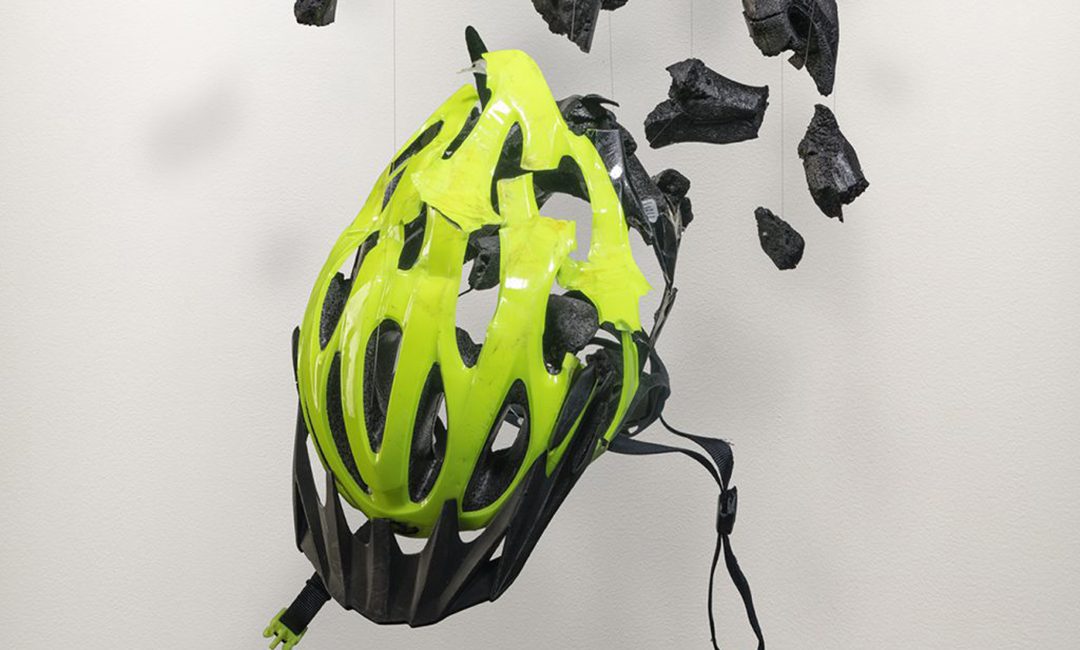Where most see a photo gallery by the City of Toronto, Kaisa Briegmann-Samson see her’s husband’s wedding ring, keys and wallet.
Tom Samson was a Grade 2 teacher at Swansea Public school. He also had two daughters.
He was riding his bike before work on an early November morning in 2012 when a van rear-ended him at Davenport Road and Landsdowne Avenue.
Samson died there. The driver of the van fled the scene.
After turning himself in the next day and pleading guilty to failing to remain at the scene of an accident causing death, Michael Olivera received a six-month jail sentence and banned from driving for two years.





Samson’s death led his widow to become a fierce advocate for cyclists and traffic safety.
Although she doesn’t ride her own bike anymore, Briegmann-Samson started the Friends and Families for Safe Streets. It offers support group meetings for members, most of whom have either been involved in cycling collisions or like herself, lost loved ones as a result.
Her group worked with the city to create the “Art of Distraction.”
“We really focus on safety and the experience of people in crashes. Education is part of a bigger picture,” Briegmann-Samson says. “Distracted driving needs to be as socially unacceptable as drunk driving. Pay attention before somebody else pays the price.”

A ghost bike sits at Davenport Road and Landsdowne Avenue, the intersection where Tom Samson died. Ghost bikes is an organization that uses these white bikes around the world to honour the lives of cyclists who died on the road. (Google Maps)
The campaign started in November to keep drivers and cyclists focused on the roads instead of things like their cell phones. It features an online gallery and exhibits on the streets, embedded in bus shelters.
It shares stories of fatal collisions caused by distracted driving and uses real artifacts from the incidents.
The campaign is also a part of Vision Zero, Toronto’s plan to get the number of traffic-related deaths and injuries to zero by 2021.
great job @kbriegms at the launch of the Art of Distraction campaign launch today at King & Spadina. I hope your stories help see that human lives should be prioritized. Great to also hear the media ask the city some tough questions. #buildthevisionTO @FFSafeStreets #Topoli pic.twitter.com/7M2sA5uz0U
— smaclennan (@smaclennan) October 30, 2018
Briegmann-Samson believes the new initiative will save the lives of people who use their bike to get around. Though, she emphasized that a robust and protected infrastructure, like building protected curbs and clearly marked bike paths, is the best way to keep cyclists safe.
It’s also something Toronto engineer Brian Waller hopes to see.
Waller, 28, had a collision while riding his bike near the TTC’s St. George station. Another cyclist was standing beside his electric bicycle and stepped right in front of Waller to mount the bike.
You feel like you’re going to die at every corner.
—Brian Waller
Two weeks after he met the electric bike face-first, the stitches in Waller’s mouth healed. His own bike is totaled.
“Bike lanes are some of the most dangerous places to bike,” he says. “You’re better off biking in the middle of Dundas. You’ll piss people off, but at least they’ll see you.”
He doesn’t ride a bike anymore.
Ugh. This #VisionZero ad campaign in Toronto is a complete mess. It is called “The Art of Distraction”. (That bike is real. It is stuck between two panes of glass, and looks like it was crushed in a collision. It may be the real thing.)
Cool idea eh?
No. Let me explain why. /1 pic.twitter.com/NIn4l9ubhv
— Anders Swanson (@SwansonAnders) November 19, 2018
“I took a break because my bike was messed up, then I got a car,” Waller says. “It was so stressful biking in the city. I feel like I’m going to die all the time. It takes away the fun when you feel like you’re going to die at every corner.”
His girlfriend bought a bike this summer, but it’s been collecting dust in her home.
She hasn’t used it much because she’s too afraid since Waller’s accident.
The art of distraction. I thought this is a really good awareness ad. pic.twitter.com/edRCZ5kHrY
— Beula D'souza (@BeulaDsouza) November 21, 2018
Waller likes the city’s campaign about distraction and says more awareness is important; he, too, wants better-protected bike lanes.
He also says the city and the police can learn from this campaign.
“It blows my mind how negligent the police and the city are to traffic. Cyclists don’t get penalized for their infractions and neither do drivers. I constantly see them do whatever they want, especially in rush hour,” he says. “[The city and police] just don’t care enough.”
The city is still developing other tools and campaigns to reach people besides the “Art of Distraction”, which ends mid-December. One tool is already ready online: it is a heat map showing the worst hot spots for collisions.
Many candidates in the recent municipal election on Oct. 22 also said cycling infrastructure would be their focus, if elected.
Excluding the victims from the Toronto van attack, there have been 63 deaths in Toronto this year, and more than half, 38, were pedestrians.
Swipe the map horizontally to compare a map of Toronto with and without bike lanes. Zoom in on your webpage to get a closer look. (Credit: City of Toronto and Google Maps)

